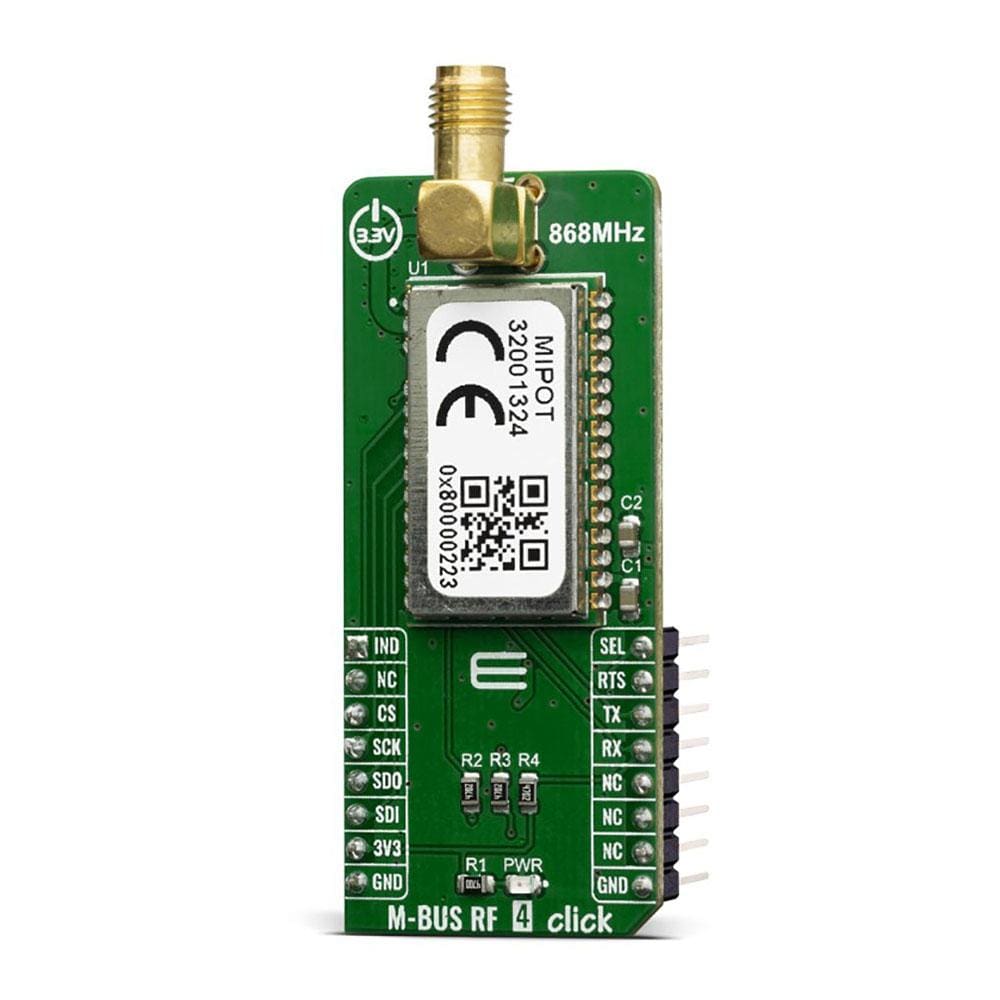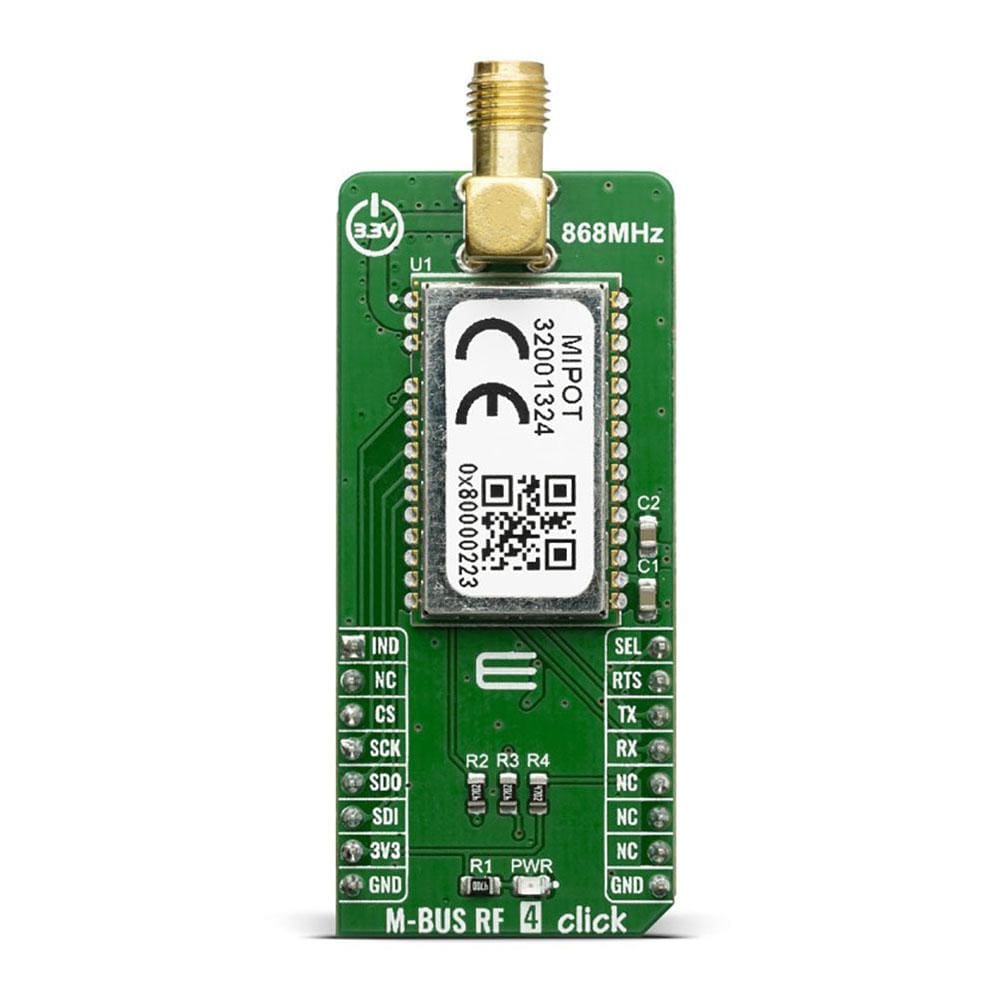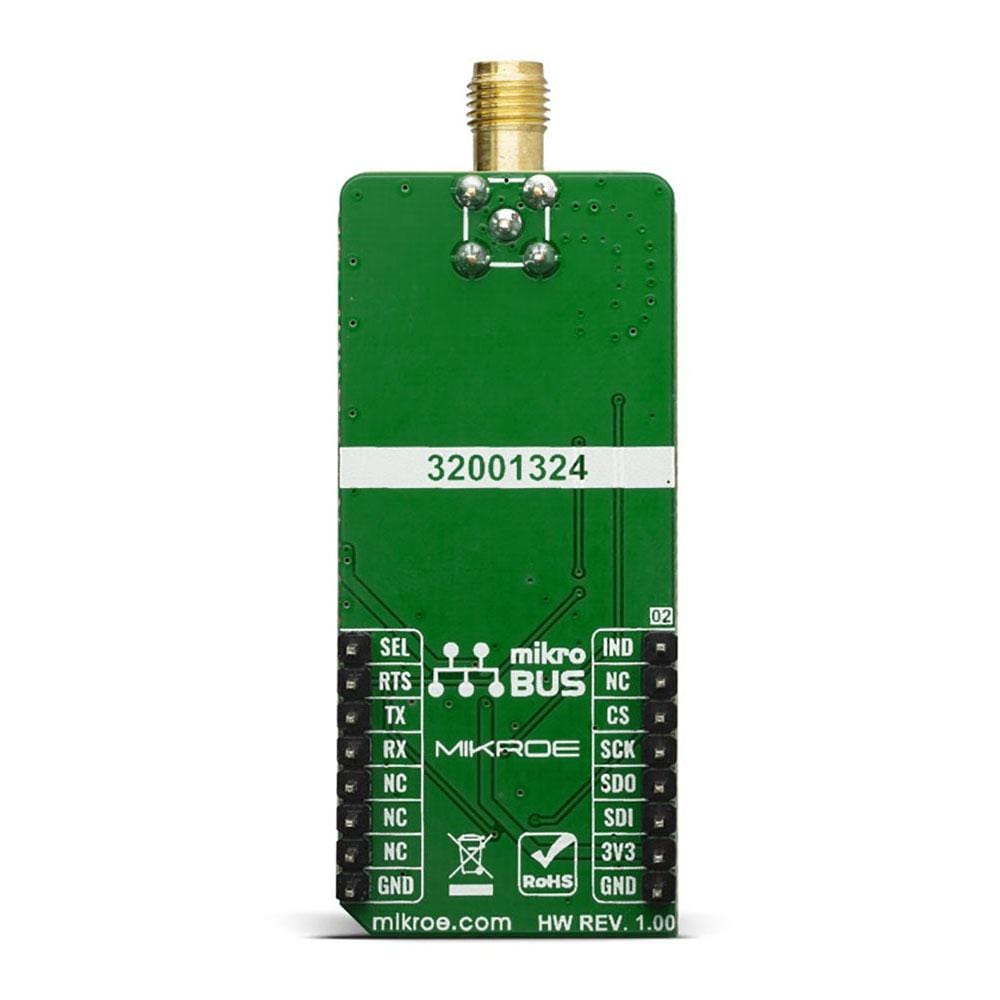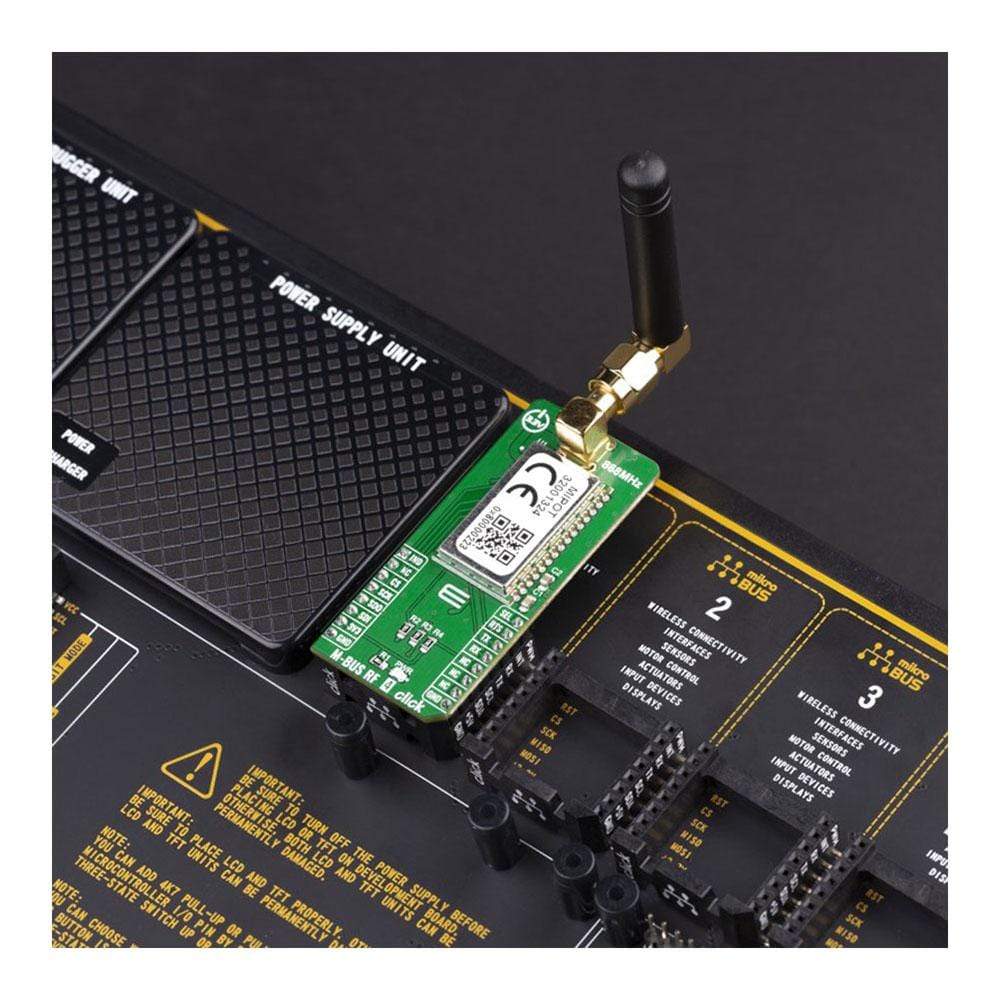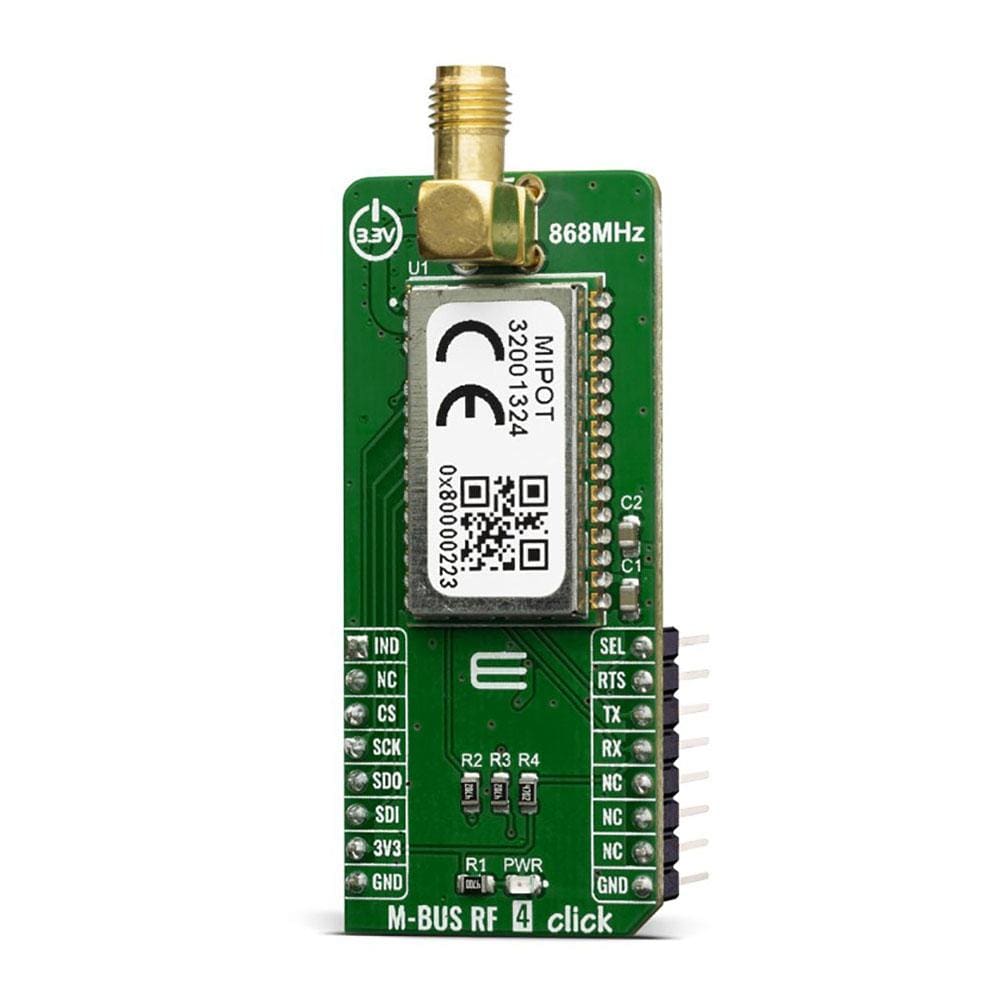
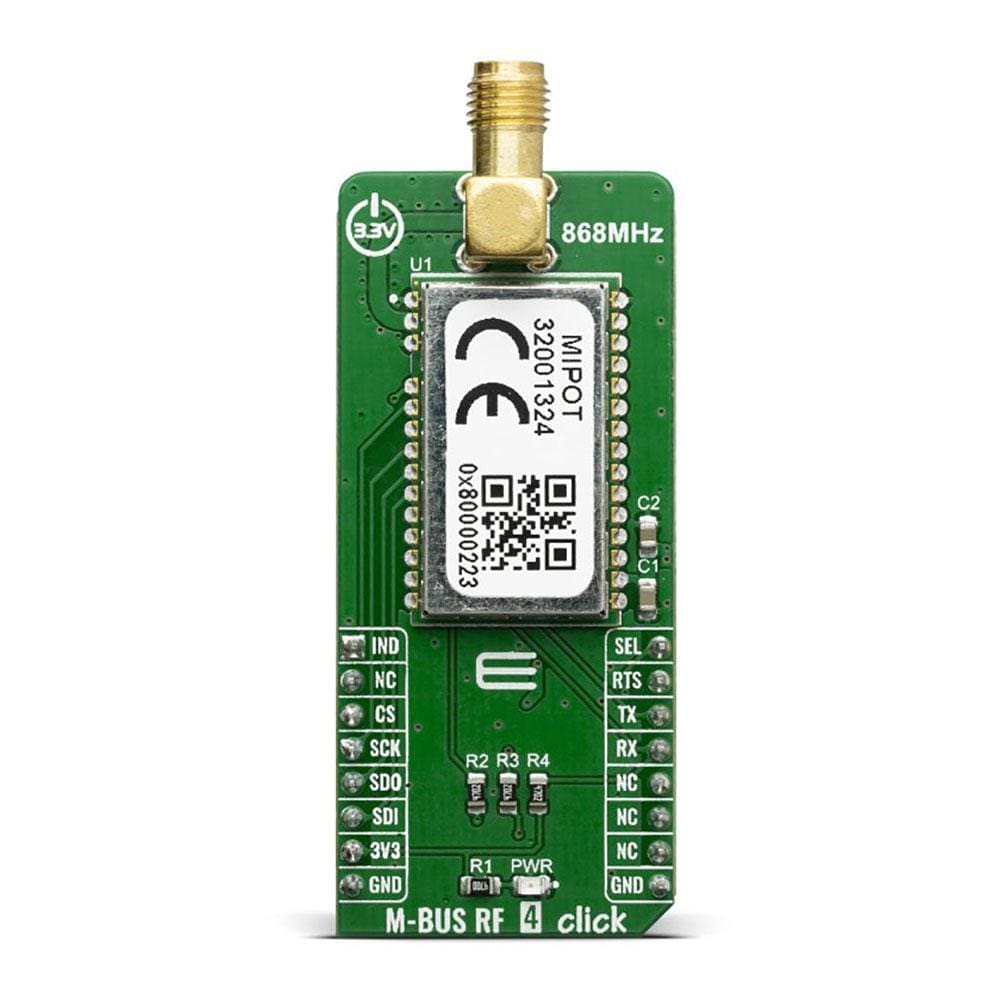
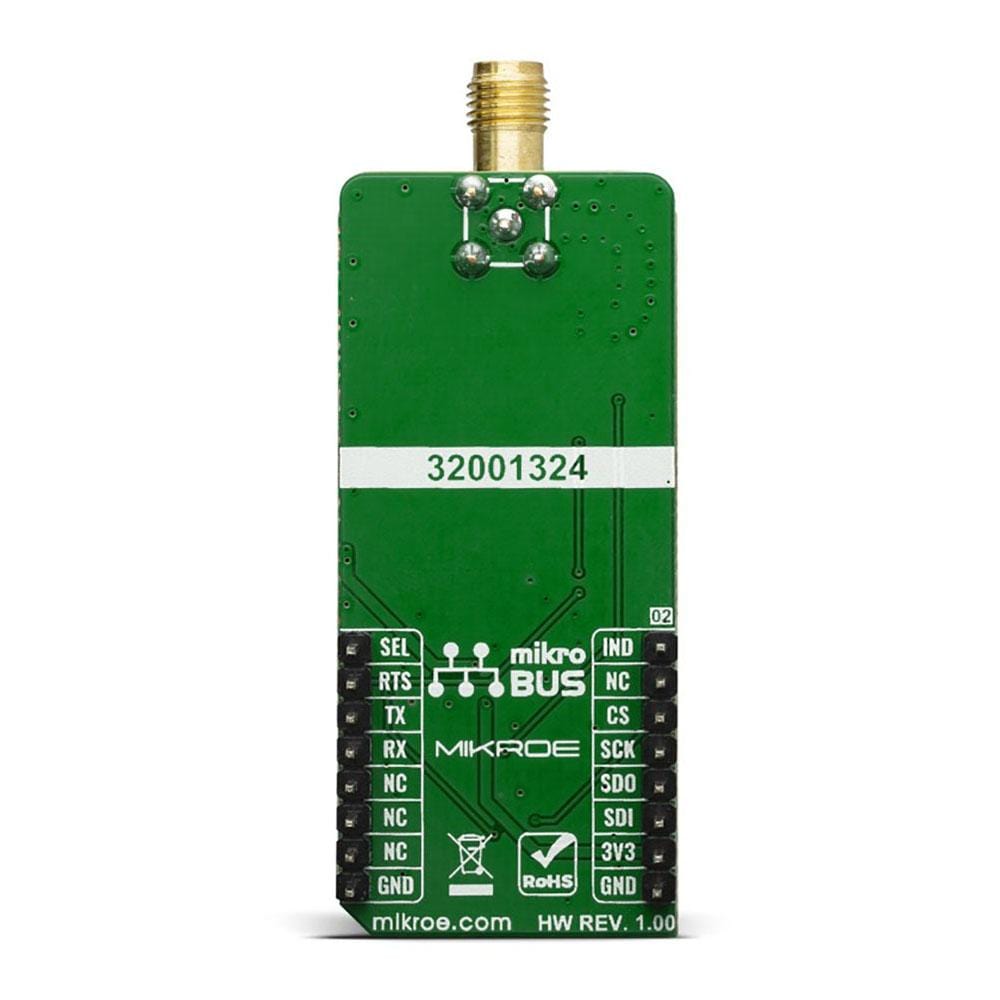
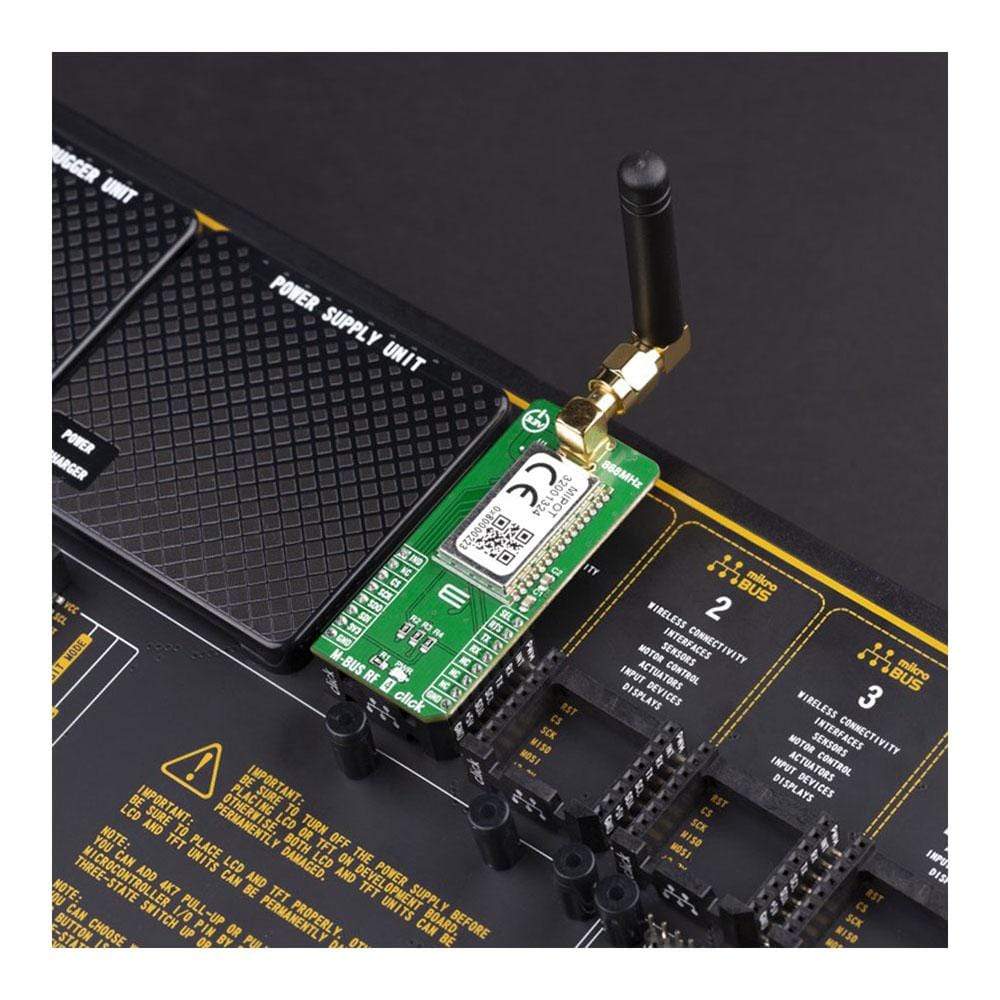
Overview
The M-BUS RF 4 Click Board™ is a mikroBUS™ add-on board with a MIPOT 32001324 RF wireless transceiver. This module operates in the 868 MHz SRD Band. Thanks to its small LCC form factor (15 x 25 mm only) and its low power consumption this module allows the implementation of highly integrated low power (battery operated) solutions for water, gas, heat or electricity metering applications, both on meter or concentrator devices.
The M-BUS RF 4 Click Board™ is supported by a mikroSDK compliant library, which includes functions that simplify software development. This Click Board™ comes as a fully tested product, ready to be used on a system equipped with the mikroBUS™ socket.
Downloads
Le M-BUS RF 4 Click Board™ est une carte complémentaire mikroBUS™ avec un émetteur-récepteur sans fil RF MIPOT 32001324. Ce module fonctionne dans la bande SRD 868 MHz. Grâce à son petit format LCC (15 x 25 mm seulement) et à sa faible consommation d'énergie, ce module permet la mise en œuvre de solutions à faible consommation (fonctionnant sur batterie) hautement intégrées pour les applications de comptage d'eau, de gaz, de chaleur ou d'électricité, à la fois sur des compteurs ou des concentrateurs.
La carte Click Board™ M-BUS RF 4 est prise en charge par une bibliothèque compatible mikroSDK, qui comprend des fonctions qui simplifient le développement logiciel. Cette carte Click Board™ est un produit entièrement testé, prêt à être utilisé sur un système équipé du socket mikroBUS™.
| General Information | |
|---|---|
Part Number (SKU) |
MIKROE-3692
|
Manufacturer |
|
| Physical and Mechanical | |
Weight |
0.023 kg
|
| Other | |
Country of Origin |
|
HS Code Customs Tariff code
|
|
EAN |
8606018716630
|
Warranty |
|
Frequently Asked Questions
Have a Question?
Be the first to ask a question about this.

